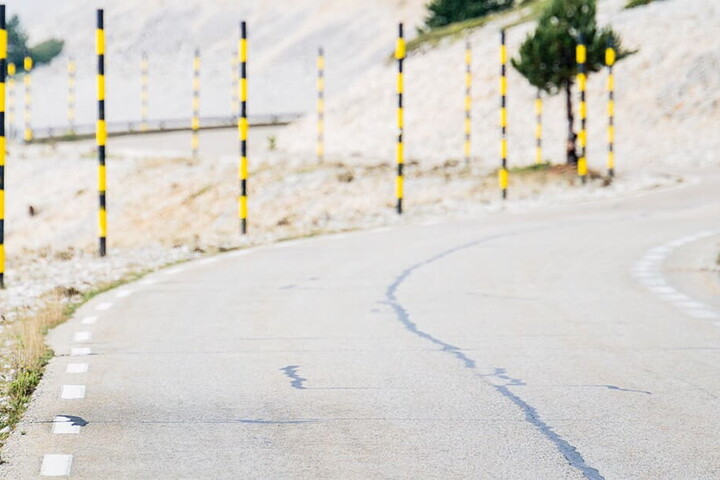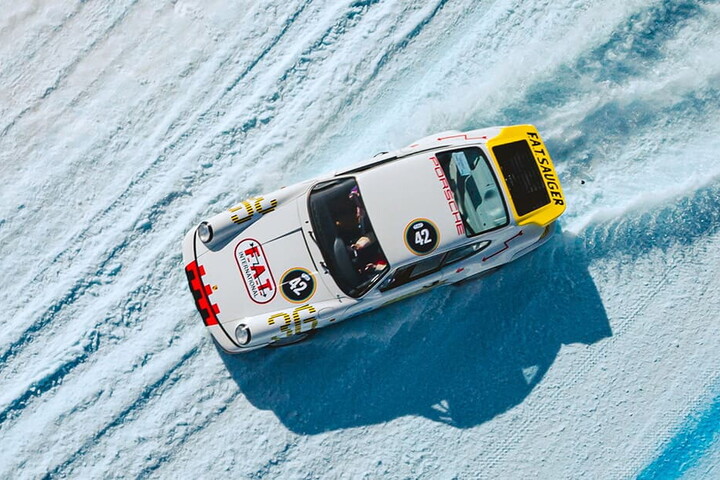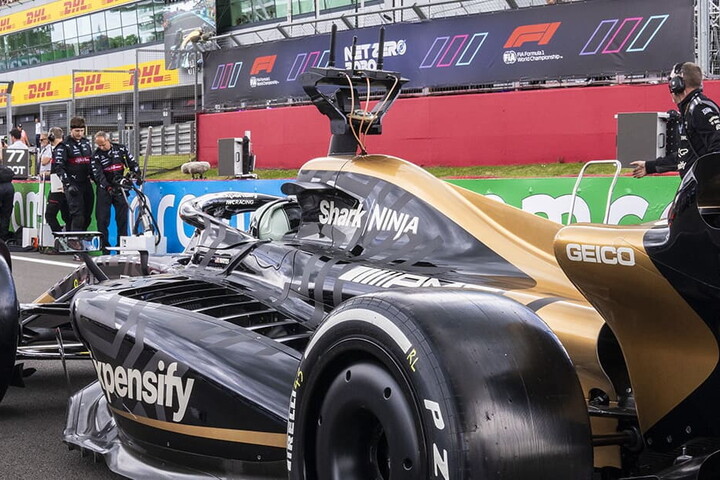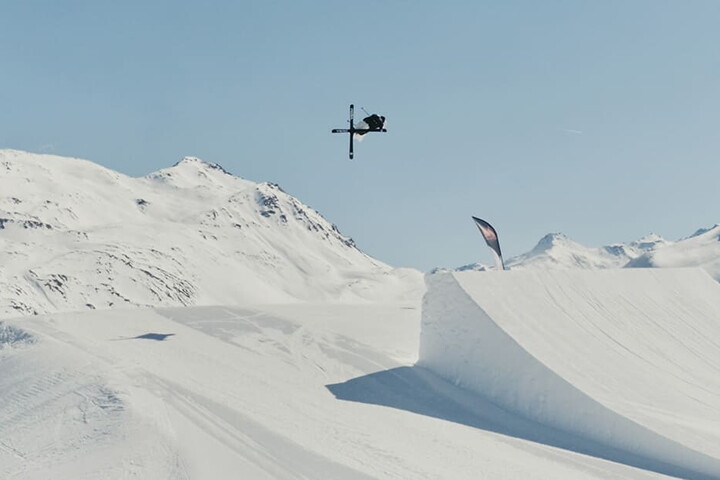Born and raised in a small, picturesque town in the foothills of Austria's highest mountain, the Grossglockner, today Fabio Wibmer is one of the world's most-loved trial bike riders with a YouTube channel boasting more than 1.6 billion views and nearly eight million subscribers.

Do you remember the first time you pulled off a perfect trick?
It's impossible to forget. It wasn't anything special, but I still think of it as a huge achievement because it made me realise I had the potential to do great things on my bike. I was standing on the back wheel with one foot and the bicycle was spinning round me: it was the first time I realised I had done something really good, thanks to lots of practice and perseverance. It's crazy how even today I can remember so vividly what I felt that day. It happened more than 13 years ago, yet paradoxically it remains one of the best feelings that I have ever had on a bicycle.
What made you go from motorbikes to bicycles?
It was my dad who introduced me to the world of motocross. We watched races together and at a certain point he gave me and my brother a small motorbike to share. I was six years old and I think that from that moment on it became my greatest passion. I read all the magazines that discussed the sport. I spent lots of time reading articles about the great riders who inspired me. Then I also started racing, which provided an even bigger introduction to a world that I loved. I owe that sport a lot. Ever since I was a child, motocross taught me to confront and manage my adrenaline; it has definitely made my journey to cycling easier – there are lots of parallels. On two wheels – whichever type they are – you are forced to confront your fears and, at the same time, you are spurred to push yourself beyond your own limits.

How and where did you start practising to create your tricks?
I grew up in what is currently one of the smallest towns in Austria – I think there are now only around 100 people living there – and you can guess that I didn't have too many opportunities for experimentation. From the start, I tried to use what I had in order to do the best I could. I spent my afternoons behind my house where there was a flat area of concrete with a wall that was just under a metre high. That was my training ground. I don't even know how many thousands of times I jumped that wall with my bike. Even today I feel grateful for those moments because it was there that I became convinced of the need for limits to completely free up your creative attitude. When you don't have many options, you start to think differently, you concentrate on finding solutions, new plans. My background is simple and this has helped me think outside of the box.
What are the most difficult challenges you have faced?
There has never been anything that I would really label as difficult; I have always focused on opportunities instead of difficulties. Especially when I moved from motocross to cycling, I started to think: “OK, what doesn't work today will work tomorrow or next week. Sooner or later, it will succeed.” I put entertainment first and the reason I do it is to enjoy my life to the full.

Danny MacAskill was a fundamental part of your introduction to the world of trial bikes. What is your greatest source of inspiration now? Where do you find ideas for your tricks?
Danny is the reason why I started shooting these kinds of extreme videos and he remains my biggest inspiration. To create concepts and get new ideas, I spend a lot of hours on the internet, which is the perfect place to find interesting ideas. I am really curious and I like to push myself, to create crossovers with other sports, like skateboarding and parkour. Every time that I am amazed by something, I think about how I could integrate that trick into cycling to create a real “wow” effect.
In just a few years, you have developed a huge following on social media and you are admired by millions of fans. What's your secret?
If you see that you have potential, you have to give yourself a chance. I think the key is to continue to move forward, to never give up. Even if it might look simple from the outside, every video is the result of huge sacrifices, many hours and nights of preparation and work. There have been lots of hard moments where things weren't working. There were situations where I tried something millions of times, repeating to myself that the moment would come where everything would go perfectly, and in the end it did. Especially when things aren't working, you have to keep believing – this is probably the secret to making sure you make it happen.

Has there ever been a time where you were scared when making a video or a particular project? How did you overcome it?
Though it might not look like it, I'm often scared, which is a good thing, as it helps me understand my limits. But there was one moment – in my last video, Videogame – where I was paralysed by fear. We were in France, in the middle of nowhere, and we had built a jump on impassable, mountainous terrain, full of rocky ridges. When the moment came to try it, it didn't work. I had a really bad fall and I ended up virtually unconscious.
I promised myself that I would never, ever do it again, because if it had been any worse then the consequences could have been really serious. But it's never been in my character to leave something unfinished. I knew that I could do it right and in the end I gave myself another chance. It was a really difficult step mentally as I had to overcome that voice in my head that kept asking me: “What happens if you can't do it?”
In that moment, I took on the risk, I had to block that level out, I owed it to myself. In the end, it turned out to be one of the most exciting experiences that I have ever had, and probably also the most frightening.
What is the most creative project you have done?
Probably Home Office. We recorded it in 2020, during the lockdown due to the pandemic. It was a very delicate period and people who were stuck at home were convinced that you couldn't do anything out of the ordinary. With that video, we showed that when there are spatial limits, creativity literally takes the upper hand and you can do crazy things. This concept is part of my philosophy, my way of thinking, it drives me to give my best and it makes me turn back in time to when I was a boy and limitations were vital for me, as they always opened me to new horizons in exploration.

What is the biggest lesson that cycling has taught you?
Cycling has taught me to fall over seven times and get up eight times. When I try a trick, I might fail 50 times in a row but I always think that the 51st is going to be the right one. If you have a goal and you are capable of following it all the way, with all of your strength and without ever getting discouraged, then things will work out.
How important is imagination to you?
It's incredibly important. When I'm walking on the street or visiting a new city, my mind transforms everything into a playground. Where other people might only see a wall, I think about how I could jump it. It is the way I see the world; like in a film. I see the scenes in my head and then I think about a way to make them reality. I go in search of locations and with my crew we decide the sequences and the best way to film them. But imagination is everything, the ground zero, the Big Bang.

What makes you happy?
In this world of social media where everything travels at the speed of light, the thing that makes me completely happy is to pedal my bike and forget all my worries. When I pedal, I feel better. It is a simple thing that has the power to make me feel like the happiest person in the world.




